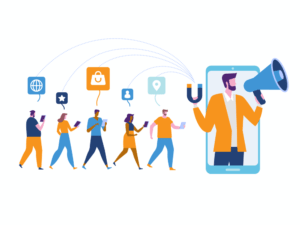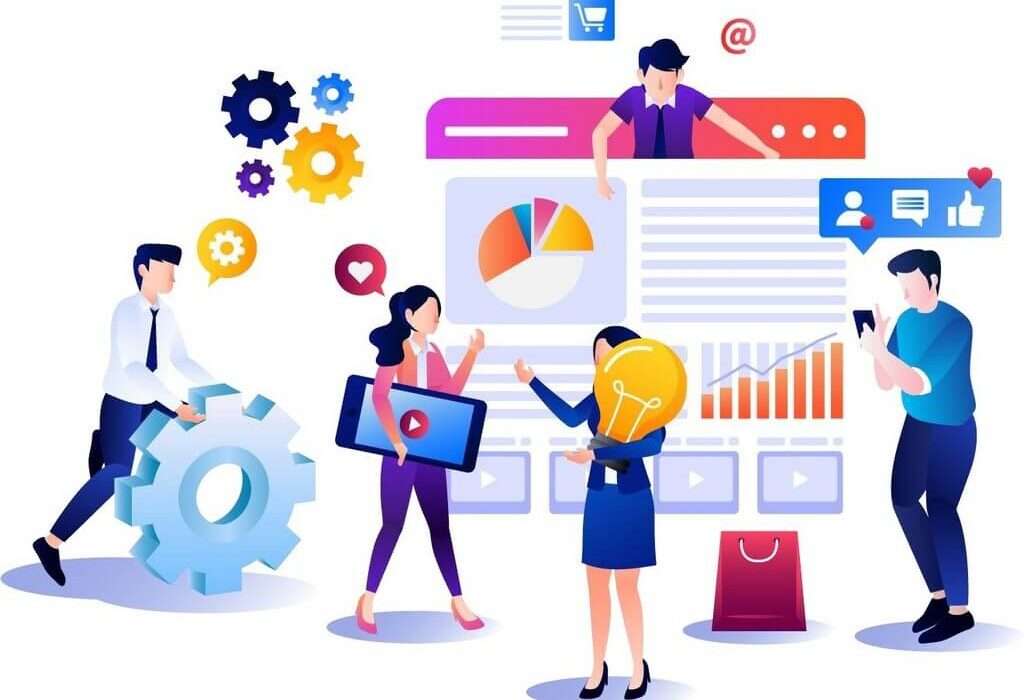As we approach 2025, marketing is evolving at an unprecedented pace. With advancements in technology, shifting consumer behaviors, and increased competition, businesses must stay ahead of emerging trends to continue thriving. In this article, we explore the top 7 marketing trends for 2025 that can significantly boost your business. Whether you’re a small startup or a large enterprise, these trends provide insights into how you can create engaging, personalized, and data-driven strategies to fuel growth.
1. Hyper-Personalization Through AI and Data

What’s Changing?
In 2025, marketing will be more personalized than ever before. Thanks to advancements in artificial intelligence (AI) and data analytics, brands can create highly targeted, individualized experiences for each customer. It’s no longer enough to send generalized messages; businesses will need to leverage AI to offer tailored experiences, product recommendations, and content that speaks directly to the needs of each consumer.
How It Works:
- AI and Customer Segmentation: AI tools can analyze customer data (purchase history, browsing behavior, social media interactions) to create highly detailed segments. This allows brands to target specific audiences with customized ads, emails, and offers.
- Predictive Analytics: By using machine learning models, businesses can predict future customer behavior and personalize offers in real-time.
Why It Works:
- Improved Customer Engagement: Personalized marketing leads to higher engagement and better customer experiences. Customers feel understood and valued, which increases their loyalty.
- Higher Conversion Rates: When customers receive content that aligns with their preferences, they are more likely to convert, whether it’s making a purchase, signing up for a newsletter, or attending a webinar.
Example:
Netflix’s recommendation engine is a prime example of hyper-personalization. By analyzing users’ viewing history and preferences, it suggests shows and movies that are more likely to appeal to each individual.
2. Voice Search and Conversational AI

What’s Changing?
With the growing adoption of smart devices, voice search and conversational AI are transforming how consumers search for products and interact with brands. By 2025, voice search is expected to make up 50% of all online searches, meaning businesses must adapt their marketing strategies to ensure they’re discoverable via voice assistants like Amazon’s Alexa, Google Assistant, and Apple’s Siri.
How It Works:
- Optimizing for Voice Search: Voice search queries are often longer and more conversational than typed searches. Businesses will need to focus on long-tail keywords, FAQs, and content that matches the natural language consumers use when speaking.
- Conversational AI: Chatbots and virtual assistants powered by AI will become even more sophisticated. These tools can handle everything from customer service inquiries to sales, providing a seamless and interactive experience.
Why It Works:
- Improved User Experience: Voice search offers a hands-free, quick, and convenient way for users to find information, which can result in better engagement.
- Increased Accessibility: With voice search becoming more prevalent, businesses will be able to reach a broader audience, including those with disabilities or individuals on the go.
Example:
Companies like Domino’s Pizza are already leveraging voice AI to allow customers to order via voice commands. By 2025, this kind of seamless, voice-driven experience will be the norm across industries.
3. Augmented Reality (AR) and Virtual Reality (VR) Experiences

What’s Changing?
In 2025, immersive technologies like Augmented Reality (AR) and Virtual Reality (VR) will revolutionize the customer experience. These technologies allow customers to interact with products in innovative ways that weren’t possible before, leading to deeper engagement and better-informed purchasing decisions.
How It Works:
- AR for Shopping: AR allows consumers to visualize how products will look in their own environment before purchasing. For example, a customer could use their phone’s camera to see how a piece of furniture would look in their living room.
- VR Experiences: Brands can use VR to provide fully immersive product demos, virtual tours, and even experiential marketing campaigns that transport users to entirely new worlds.
Why It Works:
- Enhanced Customer Experience: AR and VR make the shopping experience more engaging and interactive, improving brand recall and customer satisfaction.
- Increased Conversions: By allowing consumers to “try before they buy” in an interactive way, these technologies can drive more confident purchasing decisions.
Example:
IKEA’s AR app lets customers place virtual furniture in their homes to see how it fits, and companies like Gucci are using VR to offer immersive fashion shows to customers worldwide.
4. Sustainability and Eco-Conscious Marketing

What’s Changing?
As environmental concerns continue to rise, consumers are increasingly favoring brands that demonstrate a commitment to sustainability. By 2025, eco-conscious marketing will become not just a trend but a necessity for businesses looking to resonate with socially responsible consumers.
How It Works:
- Sustainable Products: Businesses will need to adopt environmentally friendly practices, such as using sustainable materials, reducing carbon footprints, and promoting eco-friendly products.
- Transparency and Authenticity: Consumers want to know the story behind the products they buy. Companies will need to be transparent about their sourcing, manufacturing, and sustainability efforts.
Why It Works:
- Brand Loyalty: Consumers are more likely to stick with brands that align with their values, particularly around sustainability.
- Increased Reach: Eco-conscious consumers are vocal about their preferences. Word-of-mouth and social media buzz can significantly boost a brand’s reputation if it’s seen as truly sustainable.
Example:
Patagonia’s commitment to environmental sustainability has built a loyal following. The brand’s “Don’t Buy This Jacket” campaign, which encouraged consumers to reduce consumption, resonated with their target audience and reinforced their values of environmentalism.
5. Social Commerce and Influencer Marketing Evolution

What’s Changing?
Social commerce is set to explode in 2025, with platforms like Instagram, TikTok, and Facebook allowing users to shop directly from their feeds. Influencer marketing will also continue to evolve, with a growing focus on micro and nano influencers who have highly engaged, niche audiences.
How It Works:
- Social Shopping: Social media platforms will integrate e-commerce features, allowing businesses to sell products directly through their pages, posts, or live streams.
- Influencer Partnerships: Rather than focusing on celebrities, businesses will collaborate with influencers who have smaller, but highly engaged audiences. These micro-influencers offer authenticity and trust, which are highly valuable in today’s marketing world.
Why It Works:
- Instant Purchases: Social commerce allows businesses to capture sales directly from social media without forcing users to leave the platform.
- Trust and Authenticity: Consumers trust influencers more than traditional ads. Partnering with influencers can lead to more genuine connections and higher sales.
Example:
TikTok’s shoppable videos, where users can click on products directly in a video, are already driving sales. Brands are increasingly leveraging influencer partnerships to make these experiences even more engaging and effective.
6. Video Marketing and Shoppable Content

What’s Changing?
Video continues to dominate the digital marketing landscape, and by 2025, shoppable videos will become a mainstream strategy. With more consumers preferring video content over text or images, businesses must leverage video marketing to boost visibility, engagement, and sales.
How It Works:
- Short-Form and Live Video: Platforms like TikTok and Instagram Reels are leading the charge with short-form video content. Live streaming, particularly for product launches and behind-the-scenes content, will also be crucial.
- Shoppable Videos: As e-commerce and video intersect, businesses will create videos that allow viewers to purchase products directly from the video itself.
Why It Works:
- Increased Engagement: Video content is more engaging than static images or text, leading to longer viewing times and more interaction.
- Seamless Shopping: Shoppable videos make it easier for consumers to purchase products without leaving the platform, shortening the sales funnel.
Example:
L’Oréal’s “Shop Now” feature in YouTube videos allows viewers to purchase makeup products directly while watching tutorials. Expect more brands to adopt this feature in 2025.
7. Privacy-First Marketing (Data Protection and Transparency)

What’s Changing?
With increasing concerns over data privacy and tighter regulations like GDPR and CCPA, businesses in 2025 will need to prioritize consumer data protection. A shift toward privacy-first marketing will require transparency, secure data practices, and giving customers more control over their personal information.
How It Works:
- Data Protection and Security: Brands will need to implement robust data protection measures to comply with new privacy laws and regulations.
- Transparent Data Practices: Brands that are open about how they collect and use consumer data will earn consumer trust.
Why It Works:
- Building Trust: Consumers are more likely to do business with brands they trust. By prioritizing privacy and data security, businesses can build stronger relationships with their customers.
- Compliance with Regulations: As regulations become stricter, brands will need to ensure they are compliant to avoid fines and penalties.
Example:
Apple has made privacy a core selling point, offering features like App Tracking Transparency, which gives users control over their data. This has enhanced the brand’s reputation and trust among users.
Take Action Now to Stay Ahead
The future of marketing is here, and it’s exciting. By 2025, businesses that embrace these trends and implement them into their marketing strategies will find themselves in a stronger position to not only meet customer expectations but exceed them. Whether it’s through personalized experiences powered by AI, innovative voice-driven interactions, or cutting-edge AR/VR technology, there are numerous opportunities to stand out and drive business growth.
Start today by:
- Exploring AI tools for better personalization.
- Optimizing your website for voice search.
- Experimenting with AR and VR to offer unique customer experiences.
- Ensuring your sustainability initiatives are clearly communicated.
- Building relationships with influencers who align with your brand values.
- Investing in high-quality video content to connect with your audience.
Most importantly, make sure you’re constantly adapting and evolving. The key to success in 2025 and beyond will be staying flexible, listening to your customers, and embracing innovation. Marketing may look different in five years, but one thing is certain—those businesses that stay ahead of the trends will thrive.
Final Thoughts
As we venture deeper into 2025, it’s clear that marketing will be more dynamic, data-driven, and customer-centric than ever. The ability to leverage new technologies, cater to eco-conscious consumers, and deliver seamless, personalized experiences will be the hallmark of successful businesses. Embrace these trends, experiment with new strategies, and prepare to transform the way you interact with your customers.
The future is now, and with the right approach, your business can not only survive but thrive in the rapidly evolving marketing landscape.


